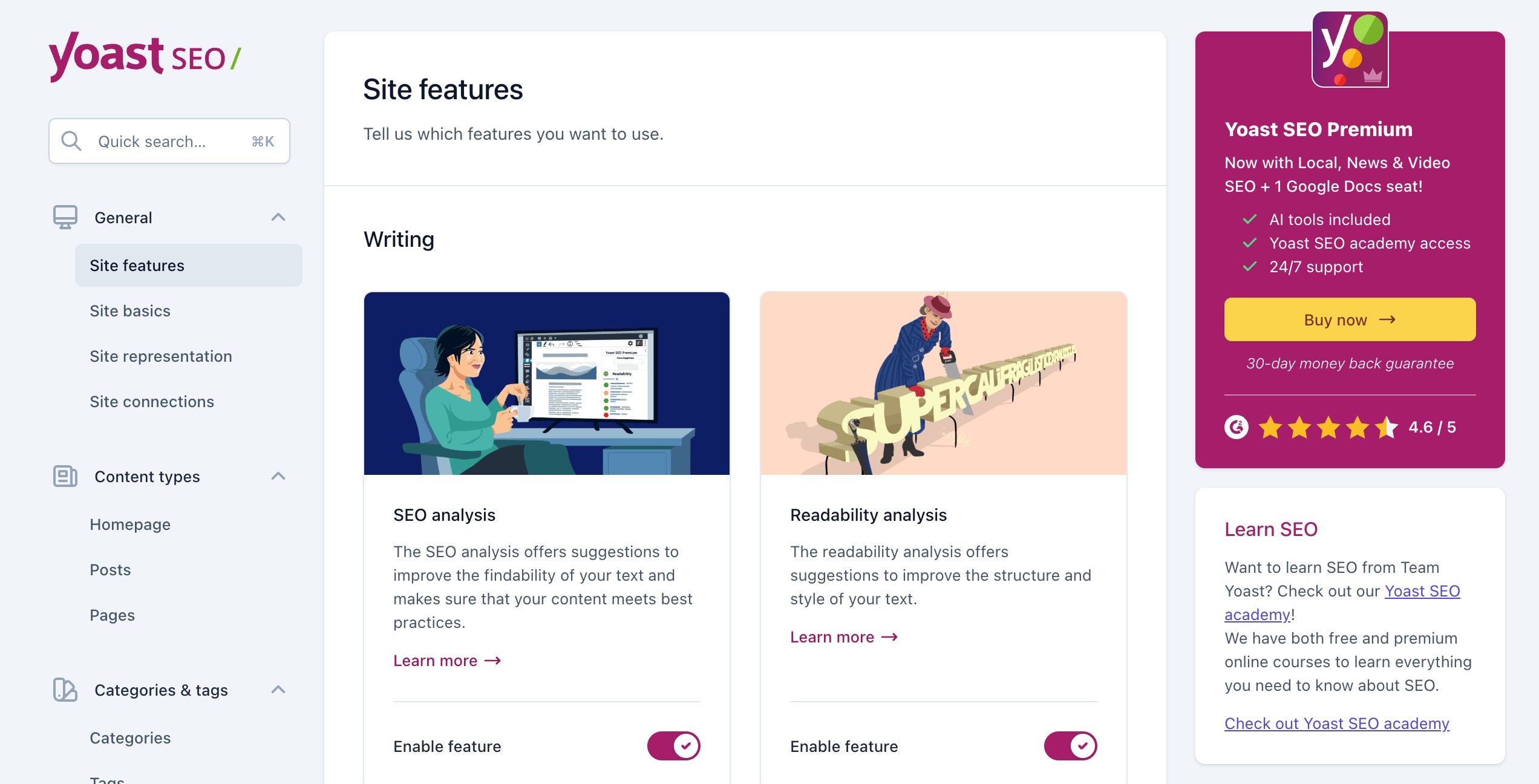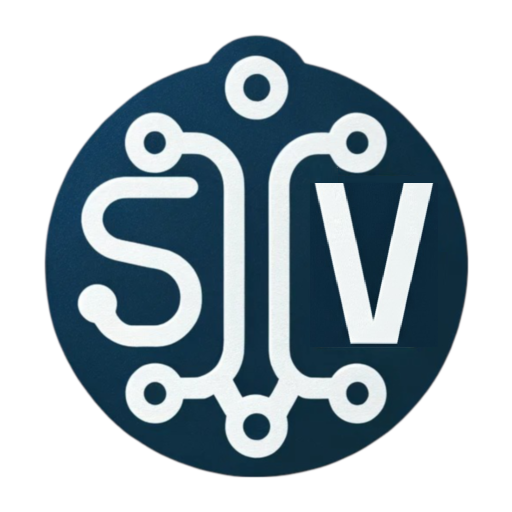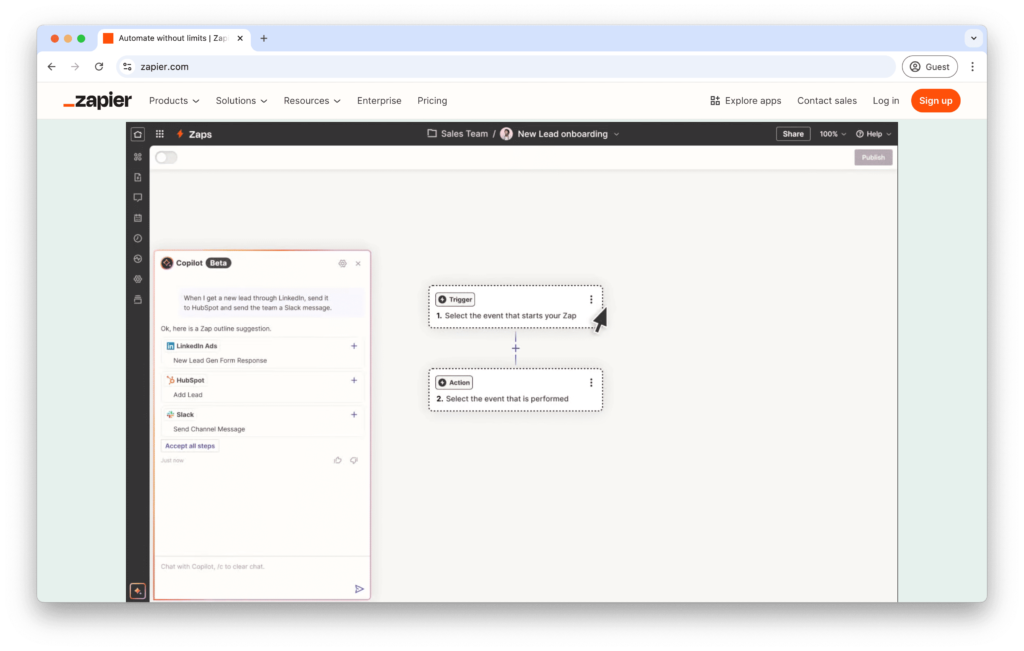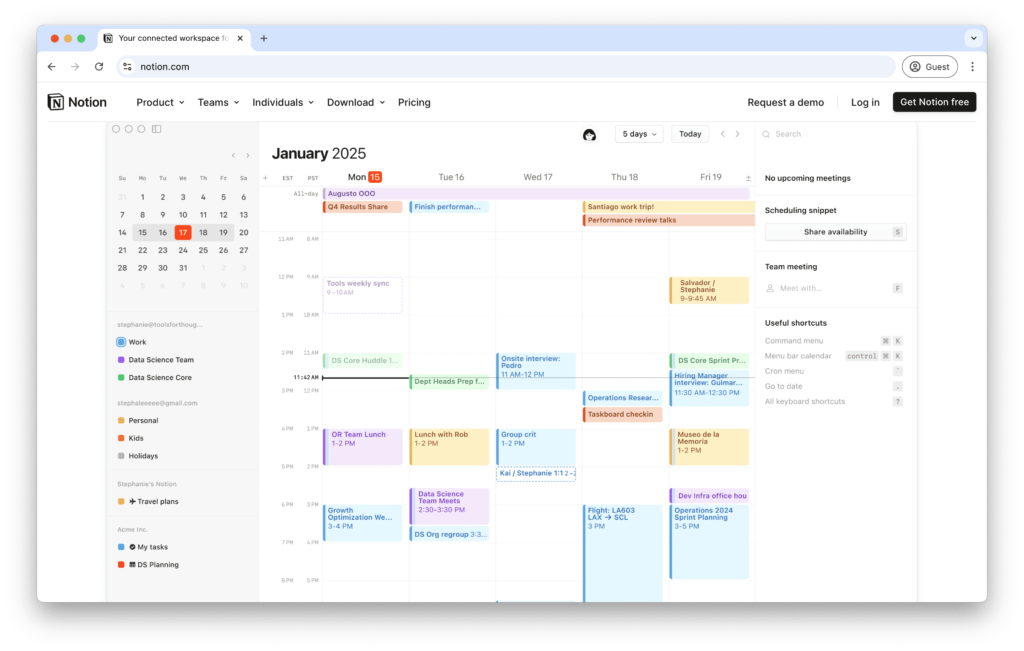
Smart Picks
Disclosure for Our Readers
This blog contains affiliate links. If you make a purchase through one of these links, our team may earn a commission at no extra cost to you. Learn more. Thanks for your support!
I’ve helped over 15 SaaS companies transform their organic search visibility in the past three years. The landscape has changed dramatically.
What worked in 2022 won’t cut it anymore. Google’s algorithm updates prioritize user experience and content quality like never before.
In this comprehensive guide, I’ll share the exact strategies I use to help SaaS companies achieve sustainable growth. These aren’t theoretical concepts—they’re battle-tested methods with proven results.
SEO remains the most cost-effective way to acquire qualified leads. However, the approach for most companies requires specific nuances that many marketers miss.
Quick Summary: SEO Success Framework for 2025
Here’s what you’ll learn from this updated guide:
1. AI-Enhanced Keyword Strategy – Leveraging artificial intelligence to identify untapped opportunities and semantic keyword clusters
2. User Experience SEO – Core Web Vitals optimization and page experience signals that directly impact rankings
3. Content Intelligence – Data-driven content creation using advanced analytics and user behavior insights
4. Technical SEO Evolution – Schema markup, JavaScript SEO, and mobile-first indexing best practices
5. Authority Building 2.0 – Modern link building strategies beyond traditional guest posting
6. Local SEO for Global SaaS – Geographic targeting strategies for international expansion
7. AI-Powered Analytics – Advanced measurement and optimization using machine learning insights
8. Voice Search Optimization – Preparing for conversational search and featured snippets
This framework covers everything—keep reading for detailed implementation strategies!
Why SEO is More Critical Than Ever in 2025
Recently, I’ve observed customer acquisition costs increasing across all paid channels. Companies spending $500+ per lead through paid ads now achieve similar results organically.
Brand trust has become the decisive factor in purchasing decisions. Users research extensively before committing to software solutions.
This means that companies need a strategic allocation of their marketing resources to SEO efforts.
The New SEO Landscape Reality
Google’s helpful content update changed everything. Algorithm updates now prioritize genuine value over keyword optimization tactics.
E-E-A-T signals (Experience, Expertise, Authoritativeness, Trustworthiness) determine content ranking potential. Companies must demonstrate deep industry knowledge consistently.
User behavior metrics influence rankings more than ever. Bounce rates, dwell time, and click-through rates directly impact search positions.
Specific SEO Challenges in 2025
Extended buyer journeys require content mapping across every touchpoint. Users consume 8-12 pieces of content before purchasing decisions.
Technical complexity of products demands simplified explanations. You must balance technical accuracy with accessibility.
Multi-stakeholder decisions mean your content must speak to different personas. IT managers, end users, and C-suite executives each require tailored messaging.
How to Do SEO for Growth in 2025
The following strategies form the foundation of every successful SEO campaign I’ve implemented. Each builds upon the others systematically.
1. AI-Enhanced Keyword Strategy
Traditional keyword research methods miss semantic relationships and user intent nuances. I now use AI tools to uncover hidden opportunities.
Semantic keyword clustering reveals related terms that strengthen topical authority. Instead of targeting individual keywords, focus on comprehensive topic coverage.
Long-Tail Keyword Dominance
Long-tail keywords represent 70% of all search queries. These phrases indicate higher purchase intent and lower competition.
Example transformation:
- Old approach: “project management software” (high competition)
- New approach: “project management software for remote marketing teams” (qualified traffic)
Intent-Based Keyword Mapping
Search intent classification helps match content to user needs perfectly. I categorize keywords into four intent types:
| Intent Type | User Goal | Content Format |
|---|---|---|
| Informational | Learning | Blog posts, guides |
| Navigational | Finding specific brand | Product pages |
| Commercial | Comparing solutions | Comparison articles |
| Transactional | Ready to purchase | Landing pages |
Competitive Gap Analysis
Competitor analysis reveals keyword opportunities your rivals miss. I examine top competitors’ content gaps systematically.
Use tools like SEMrush to identify keywords competitors rank for but you don’t. Prioritize terms with high search volume and commercial intent.
Check out my detailed guide on the best SEO tools available today.
2. User Experience SEO Optimization
Core Web Vitals became official ranking factors in 2021. Their importance continues growing as Google emphasizes user experience.
I’ve seen direct correlations between page speed improvements and ranking increases. Every 100ms delay reduces conversions by 7%.
Page Speed Optimization Essentials
Site speed affects both rankings and conversion rates significantly. Optimize systematically using these techniques:
- Compress images using WebP format
- Minify CSS, JavaScript, and HTML files
- Leverage browser caching effectively
- Use content delivery networks (CDNs)
- Optimize server response times
Mobile-First Indexing Success
Google uses mobile-first indexing exclusively now. Your mobile experience determines desktop rankings too.
Responsive design ensures consistent functionality across all devices. Test thoroughly using Google’s Mobile-Friendly Test tool.
Interactive Elements Optimization
User engagement signals influence rankings directly. Focus on elements that encourage interaction and reduce bounce rates:
- Clear call-to-action buttons
- Interactive demos and calculators
- Video content and tutorials
- Internal linking strategies
- Related content recommendations
3. Content Intelligence and Optimization
Content marketing drives 3x more leads than paid advertising while costing 62% less. Quality content establishes authority and builds trust.
I’ve developed a systematic approach to content creation that consistently outperforms competitors. It combines data analysis with user psychology.
Topic Cluster Architecture
Topic clusters demonstrate expertise depth to search engines. Create comprehensive content hubs around core themes.
Main pillar page covers broad topics. Cluster pages dive deep into specific subtopics. Internal linking connects everything strategically.
Content Gap Identification
Content gaps represent untapped ranking opportunities. I analyze competitor content systematically to find these openings.
Questions to explore:
- What topics do competitors avoid?
- Which user pain points lack solutions?
- Where do existing resources fall short?
Data-Driven Content Creation
Content optimization starts before writing begins. I use search data to inform every content decision:
- Analyze top-ranking pages for target keywords
- Identify common themes and topics covered
- Determine optimal content length and format
- Find semantic keywords to include naturally
4. Technical SEO Evolution for 2025
Technical SEO provides the foundation for all other optimization efforts. Without solid technical infrastructure, content optimization won’t achieve maximum impact.
Modern technical SEO extends beyond basic crawlability. It encompasses advanced topics like JavaScript rendering and structured data implementation.
Schema Markup Implementation
Structured data helps search engines understand your content context. Rich snippets improve click-through rates significantly.
Priority schema types for SaaS:
| Schema Type | Implementation | SEO Benefit |
|---|---|---|
| Organization | Company info | Brand visibility |
| Product | Software features | Rich snippets |
| Review | Customer testimonials | Trust signals |
| FAQ | Common questions | Featured snippets |
JavaScript SEO Mastery
JavaScript SEO becomes critical as SaaS applications rely heavily on dynamic content. Ensure search engines can render your pages properly.
Key considerations:
- Server-side rendering implementation
- Progressive enhancement strategies
- Critical resource optimization
- Lazy loading best practices
Site Architecture Optimization
Information architecture affects both user experience and search engine crawling. Design logical site structures that support both goals.
Implement clear hierarchical navigation with descriptive categories. Use breadcrumb navigation to show page relationships clearly.
5. Authority Building Through Strategic Link Acquisition
Link building remains a crucial ranking factor, but tactics evolved significantly. Quality trumps quantity more than ever before.
I focus on earning links through genuine value creation rather than manipulative outreach tactics. This approach builds sustainable authority.
Content-Driven Link Earning
Link-worthy content attracts natural backlinks without aggressive outreach. Create resources that other industry professionals want to reference.
Examples of link-worthy content:
- Original research and industry studies
- Comprehensive tool comparisons
- Free calculators and templates
- Expert interviews and roundups
Strategic Partnership Development
Strategic partnerships create win-win link opportunities. Collaborate with complementary businesses for mutual benefit.
Partnership opportunities include:
- Integration partnerships with complementary tools
- Co-created content with industry experts
- Sponsor relevant industry events and conferences
- Participate in expert roundups and panels
Digital PR and Brand Mentions
Digital PR strategies earn high-authority links from reputable publications. Focus on newsworthy angles and expert positioning.
Transform brand mentions into backlinks through systematic outreach. Many sites mention companies without linking—capitalize on these opportunities.
6. Local SEO for Global Expansion
Even global companies benefit from local SEO optimization. Many users search for solutions with geographic qualifiers.
I’ve helped companies expand internationally using localized SEO strategies. This approach accelerates market entry significantly.
Geographic Targeting Strategies
Location-based keywords capture users seeking regional solutions. Include city, state, and country names in content strategically.
Create location-specific landing pages for key markets. Address local business requirements and compliance considerations.
Google My Business Optimization
Google My Business profiles increase local visibility dramatically. Complete profiles thoroughly with accurate business information.
Encourage satisfied customers to leave positive reviews. Respond professionally to all reviews, both positive and negative.
International SEO Implementation
International SEO requires technical and content considerations. Implement hreflang tags for multi-language content properly.
Consider country-specific domains versus subdirectories. Each approach has advantages depending on your expansion strategy.
7. Advanced Analytics and Performance Measurement
SEO analytics guide optimization decisions and demonstrate ROI effectively. I’ve developed comprehensive measurement frameworks for software companies.
Traditional metrics like traffic and rankings don’t tell the complete story. Focus on business impact metrics instead.
Revenue Attribution Modeling
Attribution modeling connects SEO efforts to actual revenue generation. Implement multi-touch attribution to understand the complete customer journey.
Track key performance indicators:
- Organic traffic to trial signup conversion rate
- Content engagement metrics and progression
- Lead quality scores from organic sources
- Customer lifetime value by acquisition channel
Advanced Segmentation Analysis
Audience segmentation reveals optimization opportunities within your traffic. Analyze behavior patterns across different user groups.
Segment by:
- Traffic source and campaign
- Geographic location and device type
- User persona and company size
- Funnel stage and engagement level
Predictive Analytics Implementation
Predictive analytics help forecast SEO performance and identify trends early. Use machine learning tools to analyze large datasets.
Predictive models can forecast:
- Seasonal traffic fluctuations
- Content performance potential
- Ranking probability for target keywords
- Resource requirements for growth targets
8. Voice Search and Featured Snippet Optimization
Voice search represents 20% of all queries and growing rapidly. Optimize for conversational search patterns and natural language.
Featured snippets appear in 12.29% of search queries. Capturing these positions dramatically increases click-through rates.
Conversational Content Creation
Natural language optimization aligns content with voice search patterns. People speak differently than they type.
Focus on:
- Question-based content structures
- Conversational tone and phrasing
- Local and contextual information
- Clear, concise answer formats
Featured Snippet Optimization
Featured snippet optimization requires specific content formatting. Structure content to answer questions directly and concisely.
Successful formats include:
- Numbered lists for step-by-step processes
- Bulleted lists for feature comparisons
- Tables for data and specifications
- Paragraph summaries for definitions
Advanced SEO Tactics for Competitive Advantage
These advanced strategies separate market leaders from followers. Implement after mastering foundational elements.
AI-Powered Content Optimization
Artificial intelligence transforms content creation and optimization workflows. I use AI tools to enhance every stage of content development.
AI applications include:
- Topic research and trend identification
- Content outline generation and structuring
- Real-time optimization suggestions
- Performance prediction and analysis
Programmatic SEO Implementation
Programmatic SEO scales content creation for large keyword sets. This approach works exceptionally well for software companies with multiple features or use cases.
Create templates for location pages, feature comparisons, and integration guides. Populate with relevant data systematically.
Advanced Schema Implementation
Advanced structured data provides competitive advantages in search results. Implement sophisticated schema markup for enhanced visibility.
Consider implementing:
- Software application schema for products
- How-to schema for tutorial content
- Event schema for webinars and demos
- Video schema for educational content
Building Your SEO Tech Stack for 2025
The right tools amplify your SEO efforts exponentially. I’ve tested hundreds of tools to identify the most effective combinations.
Essential Tool Categories
Keyword research tools form the foundation of your optimization efforts. Combine multiple tools for comprehensive coverage:
- Ahrefs for backlink analysis and competitive research
- SEMrush for comprehensive keyword discovery
- Google Keyword Planner for search volume validation
Technical SEO tools identify and fix infrastructure issues:
- Screaming Frog for comprehensive site audits
- Google Search Console for performance monitoring
- PageSpeed Insights for Core Web Vitals analysis
Content optimization tools enhance creation and performance:
- Surfer SEO for content optimization scoring
- Clearscope for semantic keyword identification
- Grammarly for writing quality assurance
AI-Enhanced Tool Integration
Machine learning tools provide insights impossible through manual analysis. Integrate AI capabilities into your workflow systematically.
Consider tools like:
- ChatGPT for content ideation and creation
- Jasper AI for scaled content production
- MarketMuse for content strategy optimization
Measuring SEO Success: KPIs That Matter
Performance measurement determines optimization success and guides future strategy. Focus on metrics that align with business objectives directly.
Primary Success Metrics
Revenue attribution provides the clearest success measurement. Track organic traffic’s contribution to revenue generation consistently.
Key metrics include:
| Metric | Calculation | Business Impact |
|---|---|---|
| Organic Conversion Rate | Organic conversions / Organic traffic | Lead quality |
| Customer Acquisition Cost | SEO investment / New customers | Efficiency |
| Lifetime Value | Revenue / Customer lifespan | Profitability |
Secondary Performance Indicators
Supporting metrics provide context and identify optimization opportunities:
- Organic traffic growth rate
- Keyword ranking improvements
- Featured snippet captures
- Brand mention increases
Reporting and Communication
Stakeholder reporting demonstrates SEO value and secures continued investment. Create dashboards that connect SEO metrics to business outcomes clearly.
Include:
- Monthly traffic and conversion trends
- Competitive positioning analysis
- Content performance highlights
- Technical health improvements
Common SEO Mistakes That Kill Growth
I’ve seen these mistakes repeatedly across software companies. Avoiding them accelerates your success significantly.
Technical Implementation Errors
JavaScript rendering issues prevent search engines from seeing dynamic content. Test your pages using Google Search Console’s URL inspection tool.
Mobile optimization oversights hurt rankings across all devices. Google uses mobile versions for indexing and ranking decisions.
Content Strategy Missteps
Keyword cannibalization occurs when multiple pages target identical terms. Consolidate similar content or differentiate targeting clearly.
Thin content creation wastes resources and provides little value. Focus on comprehensive, authoritative content rather than quantity.
Link Building Pitfalls
Low-quality link schemes can trigger penalties and hurt rankings. Focus on earning links through genuine value creation.
Neglecting internal linking misses opportunities to distribute authority across your site. Create systematic internal linking strategies.
SEO Automation and Efficiency Strategies
Marketing automation streamlines SEO workflows and improves consistency. I’ve developed systems that reduce manual work by 60%.
Content Creation Automation
Content templates ensure consistent quality while accelerating production. Develop frameworks for common content types.
Editorial calendars coordinate content creation with keyword targeting and seasonal trends. Plan content themes quarterly for maximum impact.
Performance Monitoring Automation
Automated reporting keeps stakeholders informed without manual effort. Set up dashboards that update automatically with key metrics.
Alert systems notify you of significant changes immediately. Monitor rankings, traffic, and technical issues proactively.
Link Building Systematization
Outreach automation scales relationship building without losing personalization. Use tools to manage prospect research and follow-up sequences.
Link monitoring tracks your backlink profile continuously. Identify new links and monitor existing ones for changes.
Future-Proofing Your SEO Strategy
The SEO landscape continues evolving rapidly. Prepare for upcoming changes while maximizing current opportunities.
Emerging Trends to Watch
AI integration in search results will change how users interact with information. Prepare for more conversational and contextual search experiences.
Visual search optimization becomes increasingly important as image recognition technology improves. Optimize images with descriptive alt text and structured data.
Zero-click searches mean more answers appear directly in search results. Focus on featured snippet optimization and brand visibility.
Adapting to Algorithm Changes
Algorithm updates require agile response strategies. Build flexibility into your SEO approach for quick adaptations.
Focus on:
- User experience excellence
- Content quality and relevance
- Technical infrastructure reliability
- Authority building through value creation
Implementation Roadmap: Your Next 90 Days
Transform your SEO performance using this systematic implementation plan. Prioritize high-impact activities first.
Days 1-30: Foundation Building
Technical audit completion identifies critical issues requiring immediate attention. Fix crawlability problems and Core Web Vitals issues.
Keyword research expansion reveals opportunities for content creation. Focus on long-tail terms with commercial intent.
Competitor analysis uncovers content gaps and link building prospects. Document findings for strategic planning.
Days 31-60: Content and Optimization
Content strategy development aligns creation efforts with keyword targeting. Plan topic clusters around core themes.
On-page optimization improves existing content performance. Update title tags, meta descriptions, and internal linking.
Schema implementation enhances search result appearance. Start with organization, product, and FAQ markup.
Days 61-90: Authority and Measurement
Link building campaign launch begins relationship building and content promotion. Focus on quality over quantity consistently.
Analytics setup completion enables comprehensive performance tracking. Implement revenue attribution and conversion measurement.
Performance review and optimization identifies successful tactics for scaling. Double down on strategies showing positive results.
Building Sustainable SEO Success
Effective SEO requires commitment, expertise, and systematic execution. The strategies I’ve shared transform companies from invisible to indispensable.
Sustainable growth comes from focusing on user value rather than search engine manipulation. Create content that genuinely helps your audience succeed.
Start implementing these strategies systematically. Focus on foundation building before advanced tactics. Measure progress consistently and adjust based on results.
Remember that SEO success requires patience and persistence. Results compound over time as your efforts build momentum.


